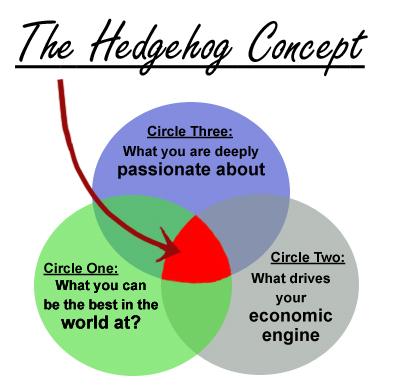
Originally published at BlueAvocado.org.
During a recent call with a leader of a nonprofit organization, he asked a question I’ve been getting more and more. “Do we really need a strategic plan?”
He continued, “It seems like a lot of work for some pie-in-the-sky document that rarely gets used.” If done the wrong way, strategic planning can be exactly that: a lot of work for very little result. However, done well, a strategic plan based on an inspiring vision and thoughtful mission, can significantly improve a nonprofit’s impact.
Below are four recommendations that will radically improve your strategic planning process:
1. Invest the time up front.
Many organizations attempt to jump directly to the strategy portion of the plan. Busy executive directors and output-oriented board members often mistakenly believe that getting quickly to the finished product is the goal. But spending time thinking about the problems you are trying to address and how they affect, and possibly change, your vision and mission is time well spent.
It was Einstein who said, “If I had only one hour to solve a problem I’d spend 55 minutes thinking about the problem and five minutes thinking about the solution.” Take time to consider what change you are trying to make in the world before you begin making your plans.
2. Increase your impact by developing your theory of change.
The “theory of change” describes a process of planning social impact. It seeks to understand the assumptions that underpin a process of social change, and it forces the participants or planners to articulate the links between a strategy or action and the intended impact or desired change.
For nonprofit organizations conducting strategic planning, developing a theory of change encourages a deep level of engagement, conversation, and agreement around key questions. Creating a theory of change helps organizations focus on areas where they can have the greatest influence. It encourages the planners to define their niche or target zone. In doing so, individuals within organizations are forced to acknowledge an irrefutable reality-that resources are finite while needs often are not.
3. Get serious about resource allocation.
While strategic planning is not a time for detailed budget writing, it is a time to think about current and future resources. As Jim Collins described in his book, Good to Great, the greatest success a company can have is by optimizing the intersection of its skill, passion and economic engine. For nonprofits, that can easily be understood as the sweet spot where your expertise, your mission, and your resources overlap.
 By using Collins’ Hedgehog Concept, nonprofits can understand the balance they should strike between the tried-and-true work of the organization, and new initiatives that are untested for their mission impact. The Hedgehog Concept helps both board and staff stay focused on not only what they want to do, but also what has the greatest chance of success. That helps them allocate resources accordingly.
By using Collins’ Hedgehog Concept, nonprofits can understand the balance they should strike between the tried-and-true work of the organization, and new initiatives that are untested for their mission impact. The Hedgehog Concept helps both board and staff stay focused on not only what they want to do, but also what has the greatest chance of success. That helps them allocate resources accordingly.
4. Bring people along every step of the way.
While it is time consuming, bringing all stakeholders along every step of the way is a wise choice. Board, staff, customers, funders, and community partners might all have something valuable to add to the process. In reality, not every stakeholder is going to have the investment in the strategic planning process that the board and staff leadership should have, but they will all probably have some influence at how successfully the plan is implemented. Therefore, it is always beneficial to create venues–both formal and informal–for stakeholder input.
Perhaps most importantly, create a board level strategic planning committee. This committee of board members and staff should be deeply committed to the strategic planning process. Their involvement will lead to a better plan that is more easily understood by the broader community and potential new funders. Additionally, their engagement will lead to more productive board meetings as they consider how decisions at the board level will assist in the fulfillment of goals outlined in the strategic plan.
I will admit that creating a strategic plan can be challenging and time consuming. But it is not nearly as difficult as trying to run an organization that creates true impact without a strategic plan. To quote a Japanese proverb:
Vision without action is a daydream. Action without vision is a nightmare.
Happy strategic planning!
Leave a Comment